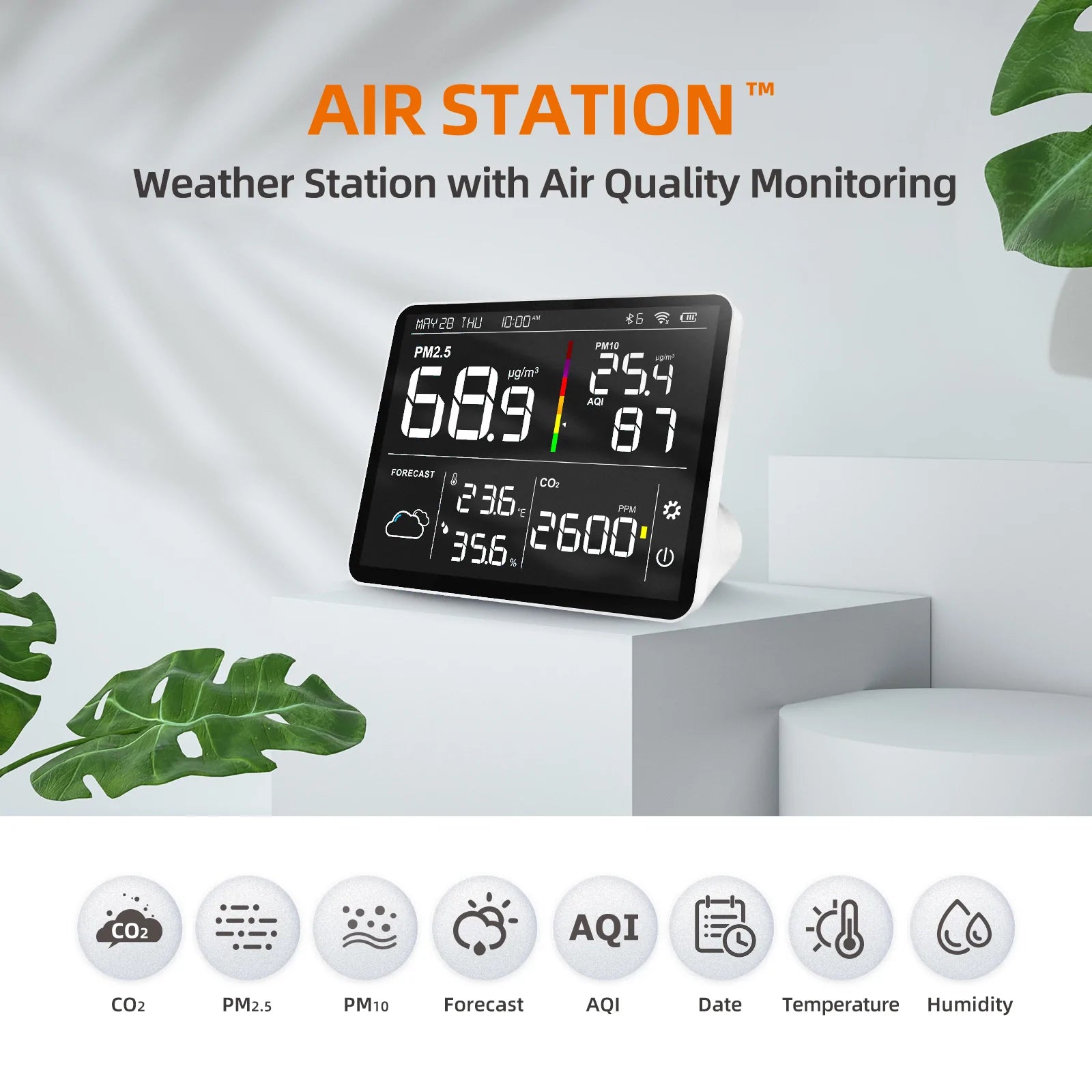
Temtop User Manual | P100 M100 Air Station
You are about to take the first step in controlling the air you breathe! Air Station is a comprehensive solution. By combining laser technology and electrochemical technology, Air Station can provide instant and accurate air quality level, see invisible threats in your air, and understand where they come from through the Air Station and its network with sub device.
PM2.5 (Particulate Matter 2.5) refers to fine particles with diameter of 2.5 micrometers or less. Due to its tiny size, PM2.5 can be absorbed into bloodstream and the lungs, which may cause eye and nose irritation, cough, asthma, emphysema, lung disease, heart attacks, cancer and etc.
PM10 (Particulate Matter 10) refers to particulates with a diameter of 10 micrometers or less. Due to the larger size, it’s inhalable but penetrates no further than bronchi as larger particles can be filtered out by cilia and mucus of nose and throat. It usually considered as less harmful to health than PM2.5.
Carbon dioxide (CO2) refers to a colorless and odorless gas that is usually derived from the breath of humans and animals. High CO2 concentration means that fresh air or ventilation is required; otherwise, it may cause problems such as drowsiness, dizziness, loss of attention, and cognitive impairment.
Temperature & Humidity may often be ignored however they do have a significant impact on individual’s well-being , comfort, health and safety as well as your property. High humidity may lead to an increase in household air pollutants especially the biological contaminants such as molds, bacteria, viruses and dust mites; cold, low humidity may cause nosebleeds, skin and respiratory irritations, dyspnea, static electricity and etc.
AQI (Air Quality Index) is a quick guide showing how clean or polluted the air is, using a range from 0 to 500, where higher index values indicate higher levels of air pollution and higher risks to health. There are six pollutants for AQI in US standard: PM2.5/10, O3, SO2, NO2, CO, where Temtop only focus on PM2.5/10 and follows the US EPA Standards to compute AQI.


Leave a comment